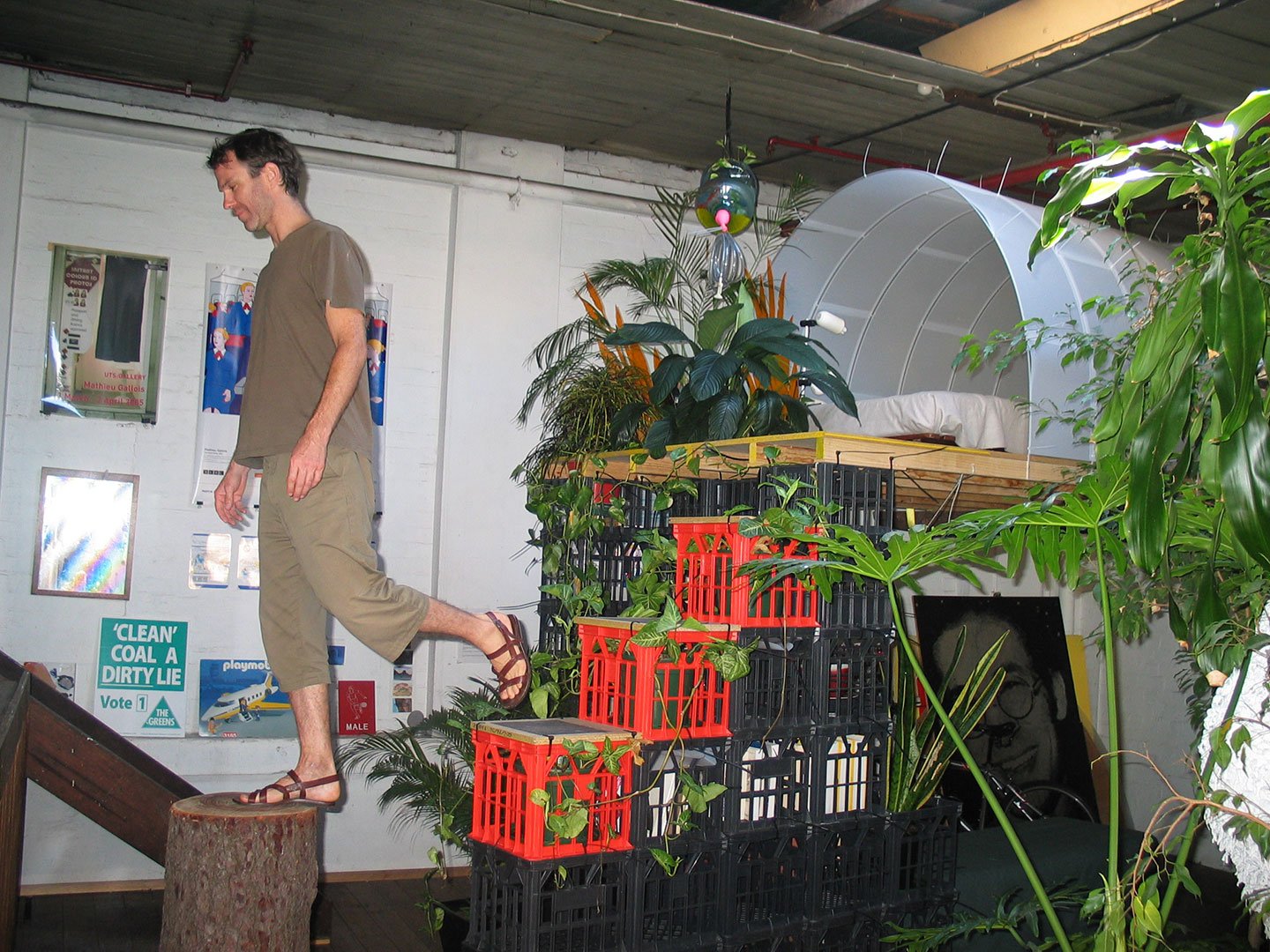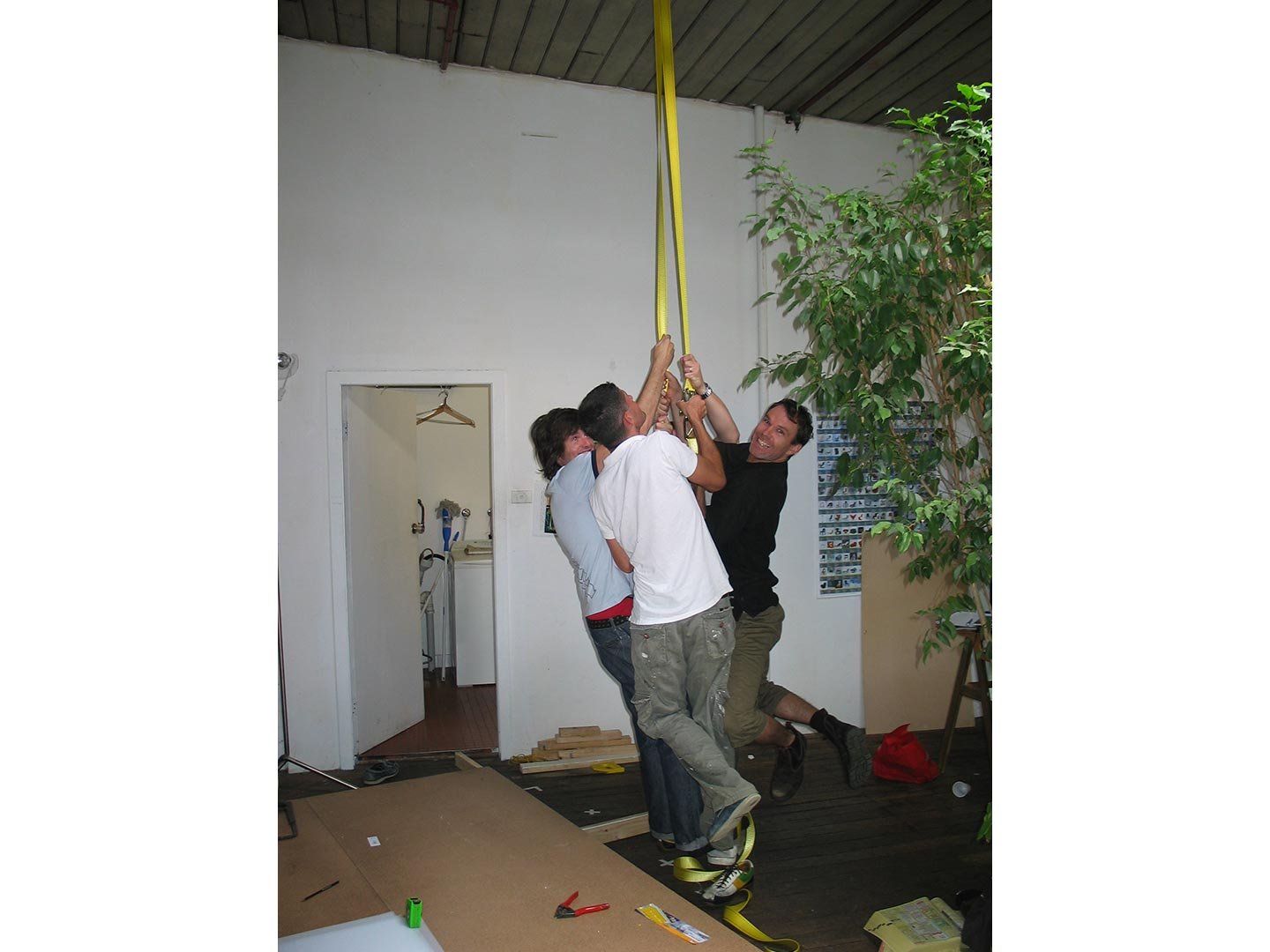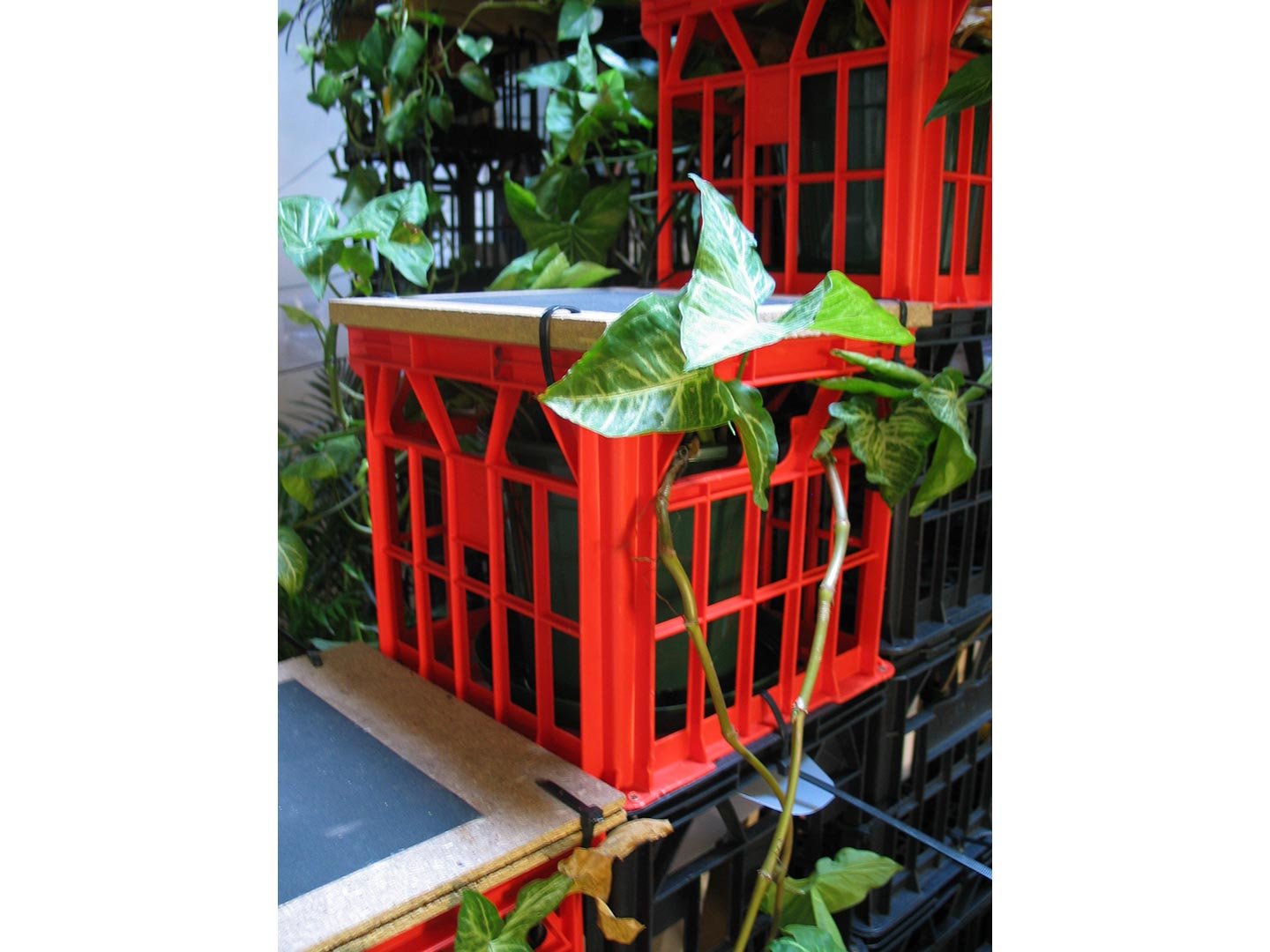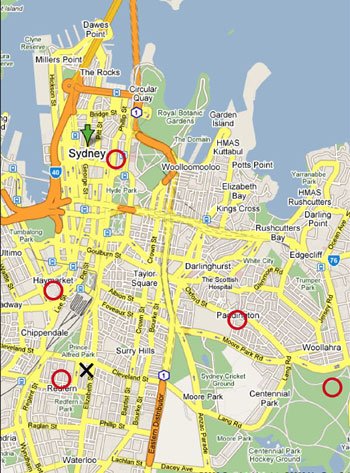DIY Architecture, 2007. Mixed media.
DIY Architecture was conceived and created while Gallois was studying architecture at UTS. Its creation was a collaborative project that involved housemates and friends involved with a share-warehouse located in Redfern, Sydney (the latter was destroyed as part of the commercial development of the building in 2014).
Most of the materials were either recycled or collected locally as per map. A Street entrepreneur was paid to collect milk crates. Timber was sourced from Centennial Park. All up the build cost just a few hundred dollars.
The 'Tree House' as it came to be known, featured in many photo shoots, small budget films, a Vogue Australia magazine story and was featured in Australia's most popular blog, The Design Files.











